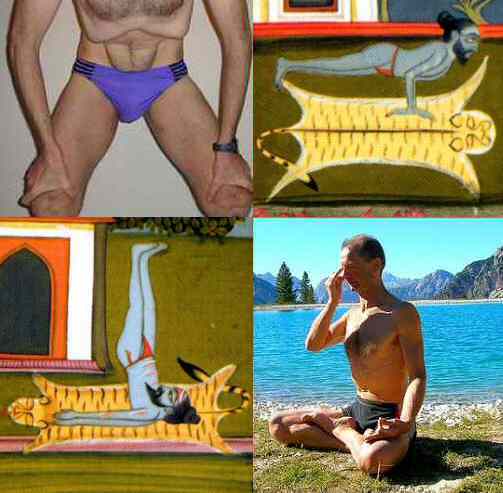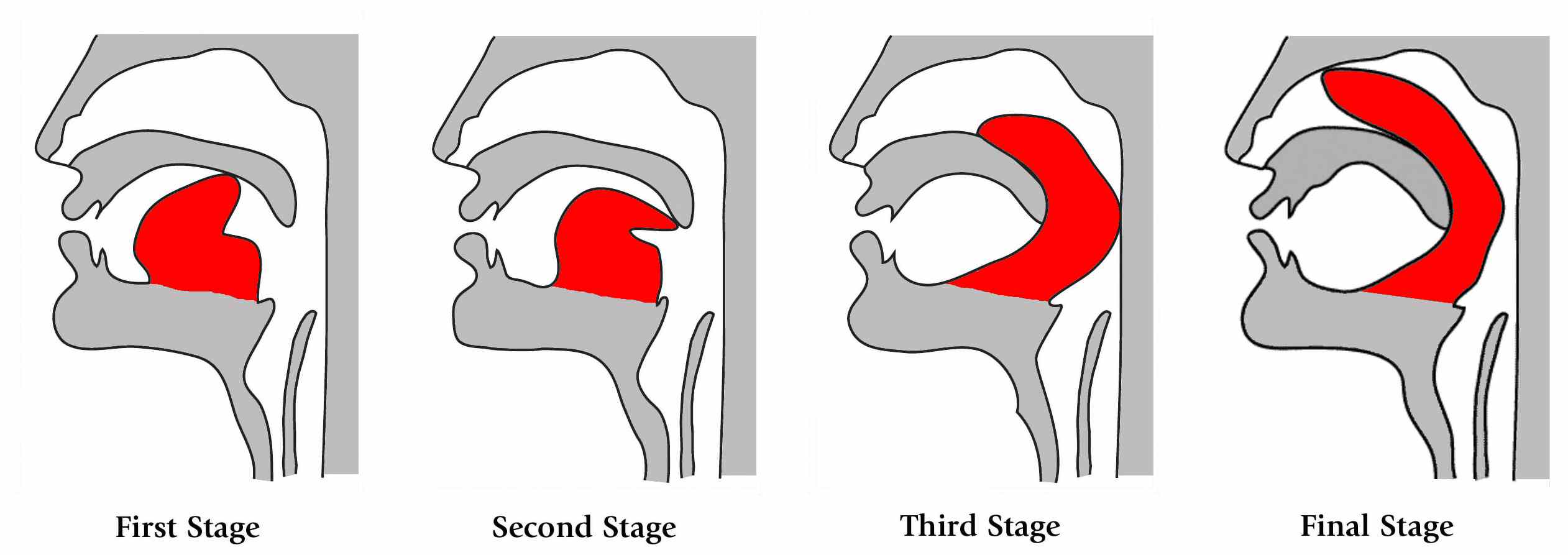|
Dattātreyayogaśāstra
The ''Dattātreyayogaśāstra'', (Sanskrit: दत्तात्रेययोगशास्त्र) a Vaisnava text probably composed in the 13th century CE, is the earliest text which provides a systematized form of Haṭha yoga under that name, and the earliest to place its yoga techniques under the name Haṭha. Three paths The ''Dattātreyayogaśāstra'' is the first text to describe and teach yoga as having three types, namely mantra yoga, laya yoga, and hatha yoga. All three lead to samadhi, the goal of raja yoga. Mantra yoga consists simply of repeating mantras until powers (siddhis) are obtained. Laya yoga dissolves the mind by methods such as raising Kundalini, though neither this nor the chakras are named in the text. Eightfold yoga The work teaches an eightfold yoga identical with Patañjali's 8 limbs (''aṣṭāṅgayoga'') that it attributes to Yajnavalkya and others, and as an alternative, ten exercises, later called mudras, that it attributes to teachers ... [...More Info...] [...Related Items...] OR: [Wikipedia] [Google] [Baidu] |
Hatha Yoga
Hatha yoga (; Sanskrit हठयोग, International Alphabet of Sanskrit Transliteration, IAST: ''haṭhayoga'') is a branch of yoga that uses physical techniques to try to preserve and channel vital force or energy. The Sanskrit word हठ ''haṭha'' literally means "force", alluding to a system of physical techniques. Some hatha yoga style techniques can be traced back at least to the 1st-century CE, in texts such as the Hindu Itihasa, Sanskrit epics and Buddhism's Pali canon. The oldest dated text so far found to describe hatha yoga, the 11th-century ''Amritasiddhi, Amṛtasiddhi'', comes from a Tantra, tantric Buddhist milieu. The oldest texts to use the terminology of ''hatha'' are also Vajrayana Buddhist. Hindu hatha yoga texts appear from the 11th century onward. Some of the early hatha yoga texts (11th-13th c.) describe methods to raise and conserve bindu (vital force, that is, semen, and in women ''rajas –'' menstrual fluid). This was seen as the physical esse ... [...More Info...] [...Related Items...] OR: [Wikipedia] [Google] [Baidu] |
Kumbhaka
''Kumbhaka'' is the retention of the breath in the yoga practice of pranayama. It has two types, accompanied (by breathing) whether after inhalation or after exhalation, and, the ultimate aim, unaccompanied. That state is ''kevala kumbhaka'', the complete suspension of the breath for as long as the practitioner wishes. Breath retention The name ''kumbhaka'' is from Sanskrit कुम्भ ''kumbha'', a pot, comparing the torso to a vessel full of air. ''Kumbhaka'' is the retention of the breath in pranayama, either after inhalation, the inner or ''Antara Kumbhaka'', or after exhalation, the outer or ''Bahya Kumbhaka'' (also called ''Bahir Kumbhaka''). According to B.K.S. Iyengar in ''Light on Yoga'', ''kumbhaka'' is the "retention or holding the breath, a state where there is no inhalation or exhalation". ''Sahit'' or ''Sahaja Kumbhaka'' is an intermediate state, when breath retention becomes natural, at the stage of withdrawal of the senses, Pratyahara, the fifth of the eight ... [...More Info...] [...Related Items...] OR: [Wikipedia] [Google] [Baidu] |
Sanskrit
Sanskrit (; stem form ; nominal singular , ,) is a classical language belonging to the Indo-Aryan languages, Indo-Aryan branch of the Indo-European languages. It arose in northwest South Asia after its predecessor languages had Trans-cultural diffusion, diffused there from the northwest in the late Bronze Age#South Asia, Bronze Age. Sanskrit is the sacred language of Hinduism, the language of classical Hindu philosophy, and of historical texts of Buddhism and Jainism. It was a lingua franca, link language in ancient and medieval South Asia, and upon transmission of Hindu and Buddhist culture to Southeast Asia, East Asia and Central Asia in the early medieval era, it became a language of religion and high culture, and of the political elites in some of these regions. As a result, Sanskrit had a lasting effect on the languages of South Asia, Southeast Asia and East Asia, especially in their formal and learned vocabularies. Sanskrit generally connotes several Indo-Aryan languages# ... [...More Info...] [...Related Items...] OR: [Wikipedia] [Google] [Baidu] |
Pranayama
Pranayama (Sanskrit: प्राणायाम, "Prāṇāyāma") is the yogic practice of focusing on breath. In classical yoga, the breath is associated with '' prana'', thus, pranayama is a means to elevate the ''prana-shakti'', or life energies. Pranayama is described in Hindu texts such as the ''Bhagavad Gita'' and the ''Yoga Sutras of Patanjali''. Later, in Hatha yoga texts, it meant the complete suspension of breathing. The pranayama practices in modern yoga as exercise differ from those of the Hatha yoga tradition, often using the breath in synchrony with movements. Etymology ''Prāṇāyāma'' (Devanagari: ') is a Sanskrit compound. It is defined variously by different authors. Macdonell gives the etymology as prana ('), breath, + ''āyāma'' and defines it as the suspension of breath. Monier-Williams defines the compound ' as "of the three 'breath-exercises' performed during (''See'' ', ', '". Monier-Williams, p706, left column./ref> This technical defi ... [...More Info...] [...Related Items...] OR: [Wikipedia] [Google] [Baidu] |
Vajrolī
''Vajroli mudra'' (Sanskrit: वज्रोली मुद्रा ''vajrolī mudrā''), the Vajroli Seal, is a practice in Hatha yoga which requires the yogi to preserve his semen, either by learning not to release it, or if released by drawing it up through his urethra from the vagina of "a woman devoted to the practice of yoga". The mudra was described as "obscene" by the translator Rai Bahadur Srisa Chandra Vasu, and as "obscure and repugnant" by another translator, Hans-Ulrich Rieker. The mudra is rarely practised in modern times. It was covered in the 1900s by the American sexologist Ida C. Craddock, the resulting legal proceedings against her leading to her imprisonment and suicide. The explorer Theos Bernard learnt and illustrated the posture associated with the mudra. The pioneer of modern yoga, Krishnamacharya, gives impractical instructions for the mudra, demonstrating in Norman Sjoman's opinion that he had never tried the practice. Context Hatha yoga is a b ... [...More Info...] [...Related Items...] OR: [Wikipedia] [Google] [Baidu] |
Mula Bandha
A bandha () is a kriyā in Hatha Yoga, being a kind of internal mudra described as a "body lock," to lock the vital energy into the body. ''Bandha'' literally means bond, fetter, or "catching hold of".Iyengar, 1976: pp.435–437Iyengar, 1976: p.525 ''Maha Bandha'' Mahā Bandha ("the great lock") combines all the other three bandhas, namely: * Mula Bandha, contraction of the perineum * Uddiyana bandha, contraction of the abdomen into the rib cage * Jalandhara Bandha, tucking the chin close to the chest In Ashtanga Yoga, these three Bandhas are considered to be one of the three key principles of yoga practice. ''Mula bandha'' ''Mūla bandha'' is a primary ''bandha'' in traditional yoga. The earliest textual mention of ''mūla bandha'' is in the 12th century Shaiva Natha text '' Gorakṣaśataka'' which defines it as a yogic technique to achieve mastery of breath and to awaken the goddess Kuṇḍalinī. Etymology Mula Bandha (Sanskrit: मूल बंध) is from ''Mūla'' ... [...More Info...] [...Related Items...] OR: [Wikipedia] [Google] [Baidu] |
Uddiyana Bandha
A bandha () is a kriyā in Hatha Yoga, being a kind of internal mudra described as a "body lock," to lock the vital energy into the body. ''Bandha'' literally means bond, fetter, or "catching hold of".Iyengar, 1976: pp.435–437Iyengar, 1976: p.525 ''Maha Bandha'' Mahā Bandha ("the great lock") combines all the other three bandhas, namely: * Mula Bandha, contraction of the perineum * Uddiyana bandha, contraction of the abdomen into the rib cage * Jalandhara Bandha, tucking the chin close to the chest In Ashtanga Yoga, these three Bandhas are considered to be one of the three key principles of yoga practice. ''Mula bandha'' ''Mūla bandha'' is a primary ''bandha'' in traditional yoga. The earliest textual mention of ''mūla bandha'' is in the 12th century Shaiva Natha text '' Gorakṣaśataka'' which defines it as a yogic technique to achieve mastery of breath and to awaken the goddess Kuṇḍalinī. Etymology Mula Bandha (Sanskrit: मूल बंध) is from ''Mūla'', ... [...More Info...] [...Related Items...] OR: [Wikipedia] [Google] [Baidu] |
Khecarī Mudrā
' (Sanskrit, खेचरी मुद्रा) is a hatha yoga practice carried out by curling the tip of the tongue back into the mouth until it reaches above the soft palate and into the nasal cavity. The tongue is made long enough to do this with many months of daily tongue stretching and, in some versions of the practice, by gradually severing the frenulum of the tongue with a sharp implement over a period of months. The goal is to attain liberation in the body, by sealing in the energy of '' bindu'' in the head so that it is not lost. Context Haṭha yoga is a branch of the largely spiritual practice of yoga, though it makes use of physical techniques; it was developed in medieval times, much later than the meditative and devotional forms of yoga. Its goals however are similar: ''siddhis'' or magical powers, and '' mukti'', liberation. In Haṭha yoga, liberation was often supposed to be attainable in the body, made immortal through the practices of Haṭha yoga. Amo ... [...More Info...] [...Related Items...] OR: [Wikipedia] [Google] [Baidu] |
Mahāmudrā
Mahāmudrā (Sanskrit: महामुद्रा, , contraction of ) literally means "great seal" or "great imprint" and refers to the fact that "all phenomena inevitably are stamped by the fact of Prajnaparamita, wisdom and Śūnyatā, emptiness inseparable". Mahāmudrā is a multivalent term of great importance in later Indian Buddhism and Tibetan Buddhism which "also occurs occasionally in Hinduism, Hindu and Tangmi, East Asian Buddhist esotericism." The name also refers to a body of teachings representing the culmination of all the practices of the Sarma (Tibetan Buddhism), New Translation schools of Tibetan Buddhism, who believe it to be the quintessential message of all of their sacred texts. The practice of Mahāmudrā is also known as the teaching called "Sahajayoga" or "Co-emergence Yoga". In Tibetan Buddhism, particularly the Kagyu school, Sahaja Mahāmudrā is sometimes seen as a different Buddhist vehicle (Yana (Buddhism), yana), the "Sahajayana" (Tibetan: ''lhen c ... [...More Info...] [...Related Items...] OR: [Wikipedia] [Google] [Baidu] |
Moksha
''Moksha'' (; , '), also called ''vimoksha'', ''vimukti'', and ''mukti'', is a term in Jainism, Buddhism, Hinduism, and Sikhism for various forms of emancipation, liberation, '' nirvana'', or release. In its soteriological and eschatological senses, it refers to freedom from '' saṃsāra'', the cycle of death and rebirth. In its epistemological and psychological senses, ''moksha'' is freedom from ignorance: self-realization, self-actualization and self-knowledge. In Hindu traditions, ''moksha'' is a central concept and the utmost aim of human life; the other three aims are ''dharma'' (virtuous, proper, moral life), '' artha'' (material prosperity, income security, means of life), and '' kama'' (pleasure, sensuality, emotional fulfillment). Together, these four concepts are called Puruṣārtha in Hinduism. In some schools of Indian religions, ''moksha'' is considered equivalent to and used interchangeably with other terms such as ''vimoksha'', ''vimukti'', '' kaivalya'' ... [...More Info...] [...Related Items...] OR: [Wikipedia] [Google] [Baidu] |





